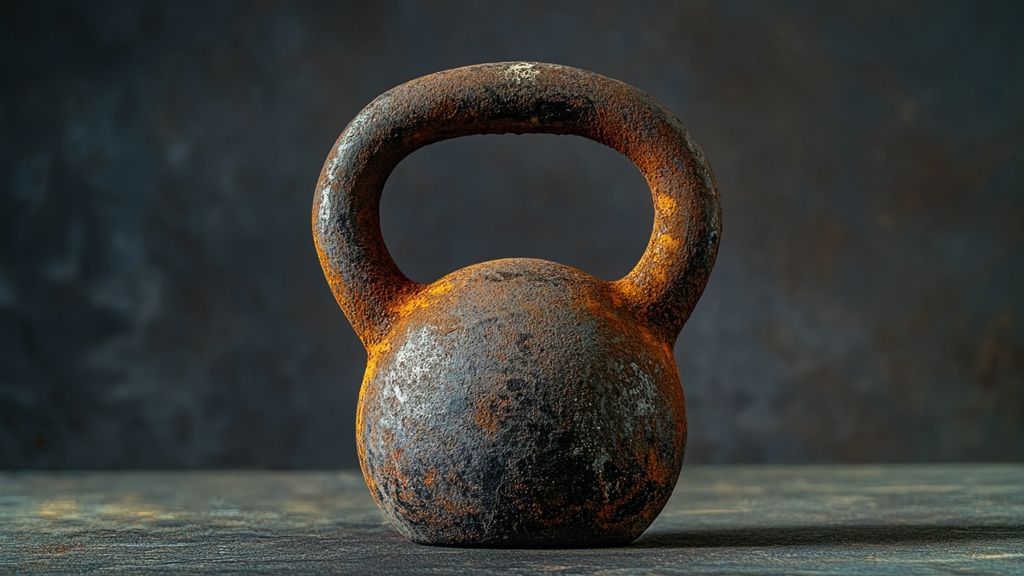The fitness landscape is buzzing with various equipment options, making it hard to choose the best tools for reaching your goals. Two of the most popular options in gyms everywhere are dumbbells and kettlebells. Each of these tools has unique advantages that can complement your workout regimen and help you achieve desired fitness outcomes. Understanding their key differences, applications, and effects on your training can significantly enhance your selection process and overall performance.
This extensive guide delves into the specifics of both dumbbells and kettlebells, offering insights into their differences, strengths, and weaknesses. Whether your goals are strength, hypertrophy, cardiovascular fitness, or simply general well-being, learn how these tools can be strategically used to optimize your workouts.
Understanding the Basic Differences
To effectively choose between dumbbells and kettlebells, it’s essential to grasp their fundamental differences. At first glance, both may seem similar as they serve as weight-training implements. However, their design and use lead to varied training effects and benefits.
Dumbbells: Structure and Stability
Dumbbells are encased weights at both ends of a metal handle, allowing for targeted muscle training and stability during lifts. When performing exercises, the weight is evenly distributed across both ends, offering balance and control, which is particularly beneficial for beginners or those focusing on isolation exercises.
Kettlebells: Dynamic Movements
Kettlebells, in contrast, feature a unique design with a bell-shaped weight and a handle on top. The center of mass in kettlebells is lower than the handle, promoting a distinct type of movement. Kettlebells lend themselves well to dynamic actions like swings, cleans, and snatches, demanding more coordination and engaging multiple muscle groups at once.
Training Implications
This difference in design has significant training implications. Execution of exercises using kettlebells typically incorporates momentum and rhythm, engaging stabilizer muscles more intensely than dumbbells. As a result, kettlebells can enhance coordination and power output when utilized properly in workouts.
The Role of Kettlebells in Strength Training

As a CrossFit specialist, it’s crucial to recognize how kettlebells play a vital role in a well-rounded strength training regimen. They are not just another piece of equipment; their unique properties unlock new training avenues and adaptations. Their design enables diverse exercises that effectively cater to strength development and conditioning.
Targeting Multiple Muscle Groups
Kettlebells stand out because of their versatility. Unlike dumbbells, which tend to promote straightforward exercises, kettlebells encourage compound movements. For instance, exercises like the kettlebell swing or clean engage various muscles concurrently, ranging from the legs and hips to the core and shoulders. This method of training can dramatically improve functional strength and overall body conditioning.
Momentum and Power Generation
In addition to engaging multiple muscle groups, kettlebells facilitate powerful explosive movements. The swinging motion associated with kettlebells encourages practitioners to generate momentum, which can enhance power output and athletic performance. Research indicates that kettlebell swings enhance not only strength but also cardiovascular conditioning, offering a dual benefit when compared to traditional dumbbell exercises.
Recommendations for Beginners
For those new to kettlebells, starting with lighter weights is essential to mastering form and technique. While kettlebells can be incredibly effective, improper use can lead to injuries. Focus on foundational movements, ensuring your body aligns properly during swings and cleans. Gradually increase the weight as your skills and confidence develop.
Maximizing Muscle Growth with Dumbbells
Dumbbells have long held a prominent position in strength training regimes, emphasizing isolated muscle development and growth. Their structure provides stability, allowing for focused training on specific muscle groups. This precision is especially beneficial for bodybuilders and those seeking hypertrophy.
Isolation and Focus
With dumbbells, users can effectively target individual muscles, presenting opportunities for detailed hypertrophy. For example, dumbbell bench presses isolate the chest, while bicep curls focus solely on the biceps. Such focused training is essential for bodybuilders aiming to sculpt specific areas of the body.
Stability and Control
The symmetrical nature of dumbbells provides an increased sense of control during lifts. This stability allows practitioners to perform a wider variety of exercises without the risk of potential injury. For instance, performing a dumbbell shoulder press allows for controlled lowering and lifting, reducing undue stress on the joints, unlike what could occur with more dynamic movements using kettlebells.
Customizing Your Workout Routine
Moreover, the adjustability of dumbbells meets individual needs closely. With a broad range of weights available, you can modify the load tailored to your desired outcomes. This aspect is particularly important when periodizing your training to ensure progressive overload, leading to continual muscle growth.
Power Development: Kettlebells vs Dumbbells

When focusing on power output and athletic performance, both kettlebells and dumbbells have their roles. Yet, the dynamic nature of kettlebells often makes them more advantageous for improving explosive strength.
Dynamic Movements and Explosiveness
Kettlebells excel in movements that require engaging both strength and speed, such as kettlebell swings or snatches. These exercises require coordination and fluid motion, thereby enhancing overall power development. In contrast, while dumbbells can effectively build power, their applications often remain within more traditional parameters, limiting dynamic movements.
Understanding Power Training
Power can be defined as the amount of work done over a specific timeframe. Given this principle, kettlebells allow athletes to perform exercises that accelerate the lifting phase, fostering rapid force production. The explosive actions achievable with kettlebells result in diverse physiological adaptations compared to the more stable lifting patterns typical of dumbbells.
Using Both Tools for Cardio Training
When emphasizing cardiovascular fitness, both kettlebells and dumbbells present viable options. However, kettlebells shine in the realm of explosive and intense cardio workouts.
Cardio Benefits of Kettlebell Training
Engaging in kettlebell training can significantly elevate heart rates while providing muscle conditioning simultaneously. The full-body exercises that kettlebells facilitate—like the kettlebell snatch or Turkish get-up—merge strength training with cardio. This aspect enables practitioners to achieve their cardiovascular goals while enhancing strength and flexibility.
Efficient Caloric Burn and Metabolic Boost
High-Intensity Interval Training (HIIT) workouts with kettlebells have gained popularity for their undeniable ability to burn calories. Research suggests kettlebell HIIT sessions can lead to improved metabolic rates, making them a superior option for those looking to manage weight efficiently.
Utilizing Dumbbells for Cardio
While kettlebells often take the spotlight, dumbbells still have their place in cardio routines. Circuit training involving lighter dumbbells can elevate the heart rate while effectively targeting specific muscle groups. For example, performing a series of bicep curls or shoulder presses with low weights and high repetitions can provide a solid cardio benefit as well.
Making the Best Choice for Your Fitness Journey

Selecting between kettlebells and dumbbells necessitates understanding your personal fitness goals and preferences. Each tool holds distinctive advantages tailored to specific objectives.
When to Choose Kettlebells
If your primary focus lies within dynamic movements, enhancing functional strength, or integrating explosive power into your workout, kettlebells will generally serve you best. Their design fosters coordination and complex movement patterns that can aid in athletic performance.
When to Choose Dumbbells
Opt for dumbbells when targeting specific muscle hypertrophy or requiring stability during lifts. If your training centers on isolation techniques or if you have injury considerations, dumbbells may be a safer choice.
A Balanced Approach
Ultimately, the most effective workout regimes will embrace a combination of both kettlebells and dumbbells, fostering an engaging and comprehensive fitness program. This approach not only supports muscle growth and strength but also enhances cardiovascular capabilities and functional fitness.
